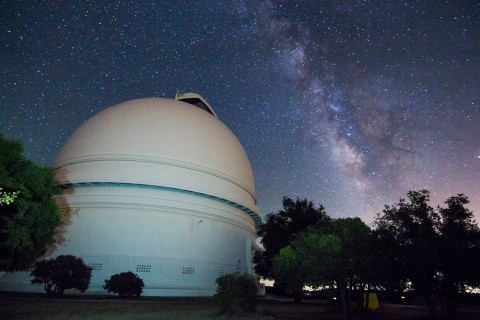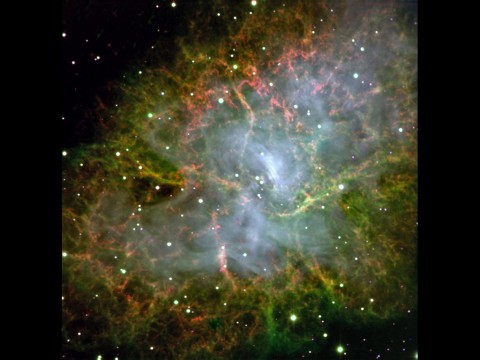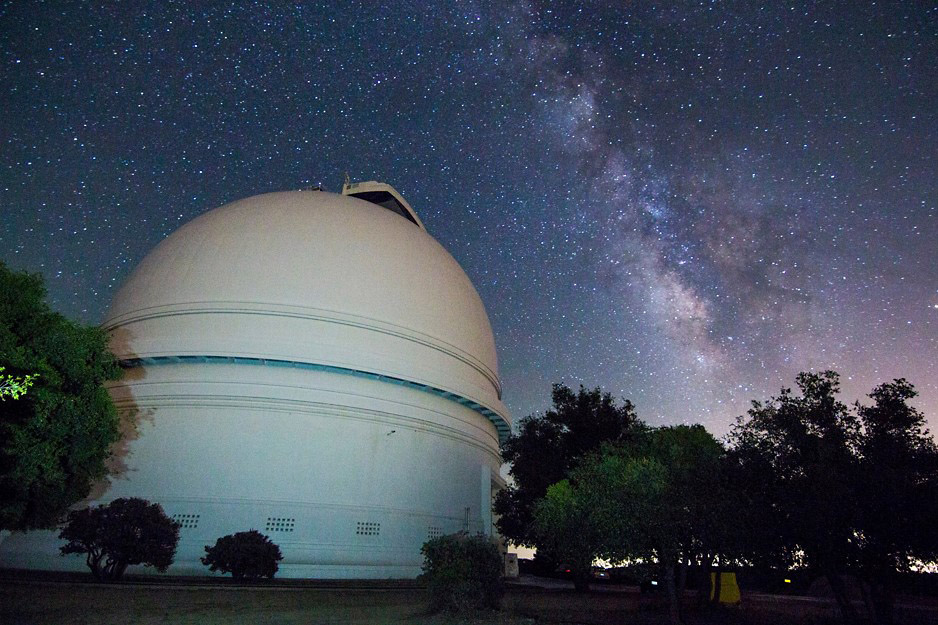Written by Elizabeth Landau
NASA’s Jet Propulsion Laboratory
 Pasadena, CA – At the Palomar Observatory near San Diego, astronomers are busy tinkering with a high-tech instrument that could discover a variety of objects both far from Earth and closer to home.
Pasadena, CA – At the Palomar Observatory near San Diego, astronomers are busy tinkering with a high-tech instrument that could discover a variety of objects both far from Earth and closer to home.
The Caltech HIgh-speed Multi-color camERA (CHIMERA) system is looking for objects in the Kuiper Belt, the band of icy bodies beyond the orbit of Neptune that includes Pluto. It can also detect near-Earth asteroids and exotic forms of stars. Scientists at NASA’s Jet Propulsion Laboratory and the California Institute of Technology, both in Pasadena, are collaborating on this instrument.

The wide-field telescope camera system allows scientists to monitor thousands of stars simultaneously to see if a Kuiper Belt object passes in front of any of them. Such an object would diminish a star’s light for only one-tenth of a second while traveling by, meaning a camera has to be fast in order to capture it.
“Each of CHIMERA’s cameras will be taking 40 frames per second, allowing us to measure the distinct diffraction pattern in the wavelengths of light to which they are sensitive,” said Leon Harding, CHIMERA instrument scientist at JPL. “This high-speed imaging technique will enable us to find new Kuiper Belt objects far less massive in size than any other ground-based survey to date.”
Hallinan’s CHIMERA team at Caltech, JPL and MIT published a paper led by Harding describing the instrument this week in the Monthly Notices of the Royal Astronomical Society.
Astronomers are particularly interested in finding Kuiper Belt objects smaller than 0.6 miles (1 kilometer) in diameter. Since so few such objects have ever been found, scientists want to figure out how common they are, what they are made of and how they collide with other objects. The CHIMERA astronomers estimate that in the first 100 hours of CHIMERA data, they could find dozens of these small, distant objects.

Another scientific focus for CHIMERA is near-Earth asteroids, which the instrument can detect even if they are only about 30 feet (10 meters) across. Mike Shao of JPL, who leads the CHIMERA group’s near-Earth asteroid research effort, predicts that by using CHIMERA on the Hale telescope at Palomar, they could find several near-Earth objects per night of telescope observation.
Transient or pulsing objects such as binary star systems, pulsing white dwarfs and brown dwarfs can also be seen with CHIMERA.
“What makes CHIMERA unique is that it does high-speed, wide-field, multicolor imaging from the ground, and can be used for a wide variety of scientific purposes,” Hallinan said. “It’s the most sensitive instrument of its kind.”
CHIMERA uses detectors called electron multiplying charged-coupled devices (EMCCDs), making for an extremely high-sensitivity, low-noise camera system. One of the EMCCDs picks up near-infrared light, while the other picks up green and blue wavelengths, and the combination allows for a robust system of scanning perturbations in starlight. The detectors are capable of running at minus 148 degrees Fahrenheit (minus 100 degrees Celsius) in order to avoid noise when imaging fast objects.
One of the objects the CHIMERA team used in testing the instrument’s imaging and timing abilities was the Crab Pulsar. This pulsar is the end result of a star whose mass collapsed at the end of its life. It weighs as much as our sun, but spins 32 times per second. The instrument focused on the pulsar for a 300-second exposure to produce a color image.
“Our camera can image the entire field of view at 40 frames per second,” Hallinan said. “We zoomed in on the pulsar and imaged it very fast, then imaged the rest of the scene slowly to create an aesthetically-pleasing image.”
Highlighting CHIMERA’s versatility, the instrument also imaged the globular cluster M22, located in the constellation Sagittarius toward the busy center of our galaxy. A single 25-millisecond image captured more than 1,000 stars. The team will be observing M22, and other fields like it, for 50 nights over three years, to look for signatures of Kuiper Belt objects.
Caltech manages JPL for NASA. The CHIMERA team at MIT is led by Hilke Schlichting.



